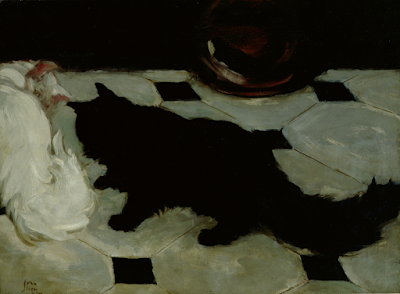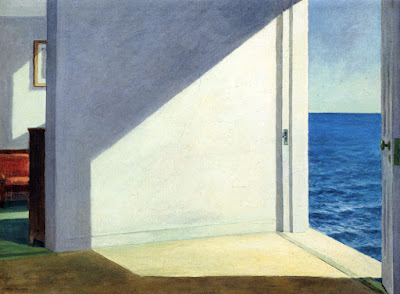The Best Cat Painting Ever- John Sloan's oil Green's Cats at Delaware Art Museum

John Sloan (American, 1871- 1951), Green's Cats, oil, 1900, Delaware Art Museum Earlier this week my wife Alice and I stopped in at the Delaware Art Museum in Wilmington. As always happens when I visit there my eye was caught by one of the Museum's early oils by the famous Ashcan School painter John Sloan, Green's Cats. Remarkable for its liveliness, the painting just nails the inimitable personality of felines. Quite an accomplishment when you consider it's almost completely devoid of any details. Sloan has chosen a view where the cats have turned away, hiding from us their distinctive eyes and whiskers. Typical of cats, they seem oblivious to our presence. To learn a painting's secrets I often like to turn it upside down. It helps one see just how Sloan arranged his painting to make it express its "cat-ness" so powerfully. For starters, Sloan expanded the scale of the two cats...
